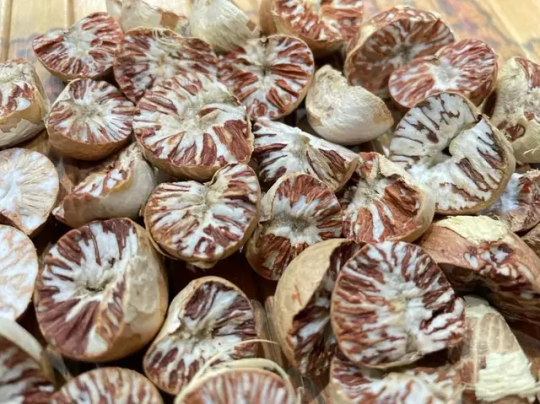#cultural symbol
Explore tagged Tumblr posts
Text
Blogging A to Z: Day 20 - Tea: Cozy mysteries often feature tea and tea parties
Explore the importance of tea in cozy mysteries, from its role as a plot device to its cultural significance. Learn how tea sets the scene, reveals character, and provides important clues in popular cozy mystery series. Includes a recommendation for a fav
Photo by Taryn Elliott on Pexels.com Disclosure: Before we dive into this post, I just want to let you know that I use affiliate links. What does that mean? It means that if you buy something through one of my links, I earn a small commission at no extra cost to you. So if you like what you’re about to read, feel free to click those links and show your support! Hey there, friends! If you’re…

View On WordPress
#book lover#book nerd#book worm#bookish#books#character#clues#cozy mysteries#cultural symbol#plot device#reading#recommendation#tea#tea parties#tradition
2 notes
·
View notes
Text

The Swamp (1900) by Gustav Klimt
5K notes
·
View notes
Text
I do sort of wish western anime fans would analyze anime and manga from a framework of japanese historical and cultural context. Specifically a lot of works from the 90s being influenced by the general aimlessness and ennui that a lot of people were experiencing due to the burst in the bubble economy and the national trauma caused by the sarin terrorist attack. I think in interacting with media that’s not local to our sociocultural/sociopolitical sphere it’s easy to forget that it’s influenced and shaped by the same kinds of factors that influence media within our own cultural dome and there ends up being this baseline misalignment of perception between the causative elements of a narrative and viewer interpretation of those elements. It’s a form of death of the author that i think, in some measure, hinders our ability to fully understand/come to terms with creator intent and the full scope of a work’s merits
#exilley's diary#this is about utena btw like. yeah its feminist and a coming of age horror story but also#it was in part ikuhara’s response to the changes he observed in the corporate anime industry and an attempt to subvert those trends#it doesnt really help that i feel certain aspects of the show are filtered through translation and certain cultural emphasises are lost#like for instance. the blood type symbolism. or wakaba’s gestures with making packed lunches#theyre incredibly japanese expressions of conventional gender roles that non-japanese audiences might not fully resonate with
27K notes
·
View notes
Text

Buckingham Palace, London, United Kingdom
#Buckingham Palace#London#Royal residence#British monarchy#Queen's home#Historic landmark#Tourist attraction#Changing of the Guard#State rooms#Royal family#Palace tours#Iconic building#Architectural marvel#Royal events#British history#London sightseeing#Heritage site#Official residence#Gardens#Cultural symbol
0 notes
Text


Head in hands. Guys. Book version of Tfp Blurr……..

#tfp#transformers prime#transformers exiles#maccadam#transformers#Blurr#Jazz#optimus prime#Ratchet#BLURR YOU SNARKY BITCH DONT BREAK THE MOST IMORTANT CULTURAL SYMBOL OF YOUR PLANET#YOU’RE SUPPOSED TO KEEP IT TILL YOU GIVE IT TO THE NEXT WINNER#…….ah well………….I suppose there’s no such thing as ‘next winner’ while you’re alive………#lovingly. Bastard.
4K notes
·
View notes
Text

Melancholy (1876) by Odilon Redon
3K notes
·
View notes
Text

The Daughters of Thespius (1853) by Gustave Moreau
2K notes
·
View notes
Text
Betel Nut: The Ancient Drug That's Still Popular Today
Betel nut, also known as areca nut, is a seed of the areca palm. It has been chewed and consumed for centuries, and is a popular cultural and religious symbol in many parts of Asia.

The earliest evidence of betel nut use dates back to 4,000 years ago, and has been found in archaeological sites in Southeast Asia. It is believed to have originated in the Philippines, and from there spread to other parts of the region, as well as to South Asia, China, and Taiwan.
Betel nut is typically chewed with a mixture of other ingredients, such as lime paste, betel leaf, and spices. This mixture is known as a quid, and is chewed for its stimulant and euphoric effects.
Betel nut has been used for a variety of purposes throughout history, including:
As a stimulant: Betel nut contains alkaloids, which have a stimulant effect on the body. This makes it a popular choice for people who are looking for a boost of energy or alertness.
As a social lubricant: Betel nut chewing is often seen as a social activity, and is often used to welcome guests or to mark special occasions.
As a religious symbol: Betel nut is used in a number of religious ceremonies and rituals throughout Asia. For example, it is used in Hindu weddings and in Buddhist funerals.
Betel nut in the modern world
Today, betel nut is still widely consumed in many parts of Asia. It is especially popular in India, Bangladesh, Myanmar, and Sri Lanka. However, betel nut chewing is also becoming increasingly popular in other parts of the world, such as the Middle East and North America.
The popularity of betel nut is due to a number of factors, including its stimulant and euphoric effects, its cultural significance, and its relatively low cost. However, betel nut chewing is also associated with a number of health risks, including oral cancer, heart disease, and stroke.
Despite the health risks, betel nut is likely to remain a popular product for many years to come. It is a deeply rooted part of many cultures, and it has a long and rich history.
Additional facts about betel nut
Betel nut is the fourth most popular psychoactive substance in the world, after nicotine, alcohol, and caffeine.
Betel nut chewing is estimated to cause 60,000 deaths from oral cancer each year.
Betel nut is a major environmental problem in some parts of the world. Betel nut trees are often planted in place of forests, and the cultivation of betel nut can lead to soil erosion and water pollution.
Despite the risks, betel nut remains a popular and important crop in many parts of the world. It is a cultural icon, and it plays an important role in the economies of many countries.
1 note
·
View note
Text

Fairy and Griffon (1876) by Gustave Moreau
#art#art history#artwork#painting#history#museums#culture#vintage#curators#museum#gustave moreau#symbolism
2K notes
·
View notes
Text


khura'inese wedding
#for an event due today but i lost my pen midway so hopefully it looks Artfully messy and not that i drew it with my mouse....#my art#klapollo#klavier gavin#apollo justice#ace attorney#loosely based off tibeten clothing +#my hc that if the sahdmandis are dragons (symbolic of royalty in chinese culture) then apollo#as the adoptive son#is a python (4 clawed mock dragon)
3K notes
·
View notes
Text

Painter's Inspiration (1897) by Jacek Malczewski
599 notes
·
View notes
Text

Eternal Paths: Fushimi Inari-taisha Shrine, Kyoto!
#Fushimi Inari-taisha Shrine#Kyoto#Japan#torii gates#spirituality#Shinto#sacred#pilgrimage#cultural heritage#Kyoto attractions#Japanese traditions#scenic beauty#hiking#vermilion gates#fox statues#divine#serene#breathtaking#historic#cultural symbol#spiritual experience#shrine complex#nature#traditional architecture#hidden gem#vibrant colors#iconic#exploration#tranquility#religious site
1 note
·
View note
Text

Twilight (1899) by Joan Brull
3K notes
·
View notes
Text

-Ophelia-
662 notes
·
View notes
Text

-Phaethon-
517 notes
·
View notes
Text

Vision (1879) by Odilon Redon
2K notes
·
View notes